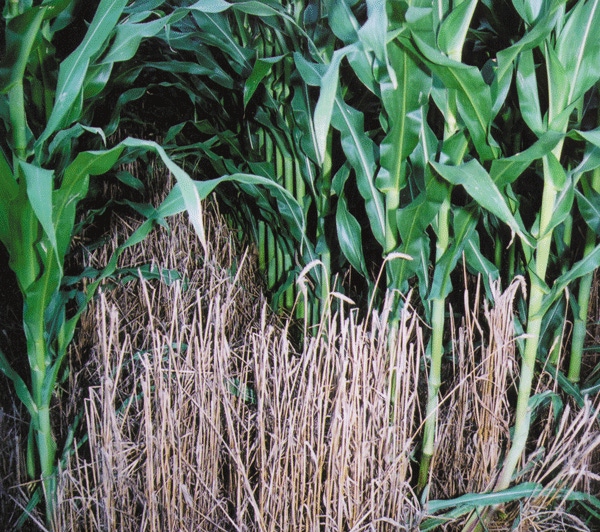
Analysis finds gaps in Chesapeake Bay data
Commissioned by a coalition of agricultural groups, the report contrasts EPA’s estimate of the Bay’s “nutrient diet” with those of the Agriculture Department, which are much more favorable to farmers.The report asks EPA to not issue a rule setting the Bay’s “pollution loads” until the inconsistencies can be reconciled.
December 13, 2010

The Agricultural Nutrient Policy Council, made up of state and national groups including the Virginia Grain Producers Association, has released a report that presents serious inconsistencies and gaps in the data used by the Environmental Protection Agency (EPA) to set pollution limits for the Chesapeake Bay.
Commissioned by a coalition of agricultural groups, the report contrasts EPA’s estimate of the Bay’s “nutrient diet” with those of the Agriculture Department, which are much more favorable to farmers. It asks EPA to not issue a rule setting the Bay’s “pollution loads” until the inconsistencies can be reconciled.
The report was prepared by LimnoTech, one of the nation’s leading water sciences and environmental engineering consulting firms. It compared EPA’s Total Maximum Daily Loads with those in the draft U.S. Department of Agriculture (USDA) report Assessment of the Effects of Conservation Practices on Cultivated Cropland in the Chesapeake Bay Region.
The key concerns outlined in the report are:
1.) EPA should not finalize the TMDL until USDA and EPA reconcile differences in estimates.
2.) Differences in land use are substantial.
3.) Differences in hydrology and their implications need to be investigated.
4.) USDA and EPA model assumptions regarding cropland differ dramatically.
5.) Major differences in the model frameworks and their implications need to be understood.
6.) The model results are substantially different and raise significant concerns that should be investigated and resolved before the TMDL is finalized.
The report calls for a “timeout” on the Bay TMDL to make sure EPA does not push the use of its pollutant estimation model beyond its original design.
“USDA estimates that seven percent of cropped acres are under conventional-tillage, five percent of cropped acres have a level of tillage between conservation-tillage and conventional-tillage, and 88 percent of cropped acres are under conservation-tillage (mulch-till or no-till) practices…
EPA estimates that 50 percent of cropped acres are under conventional-tillage and 50 percent are under conservation practices.
In general, the cultivated cropland conservation practices incorporated in USDA’s model framework are documented and statistically valid in sufficient detail to allow a general understanding of practices accounted for in the modeling, the assumptions made regarding specific conservation practices, and the level of implementation. A similar level of detail and documentation is not, however, available for the EPA model framework.”
Target already met?
“If USDA’s numbers are correct, agriculture has already significantly surpassed EPA targets for reductions in sediment and phosphorus,” said National Association of Corn Growers Director of Public Policy Rod Snyder. “It is crucial that farmers in the Bay watershed receive appropriate credit for their efforts to be good stewards of our land and water resources.”
The LimnoTech report also found that USDA and EPA make different assumptions about animal feeding operations (AFOs) and concentrated animal feeding operations (CAFOs). EPA attempts to model loads from the CAFO production areas, where animals are housed and manure stored, while USDA does not.
Both EPA and USDA appear to model manure application on cropland on a nitrogen basis.
USDA estimates that 38 percent of cropped acres have manure applied. According to the study, it is not possible to determine from the available EPA documentation how much of the cropland in the EPA model receives manure.
“Because the TMDL will have immediate economic consequences, the quest for more accurate data must begin immediately,” said National Pork Producers Association Chief Environmental Counsel, Michael Formica. Should EPA proceed without an unassailable data set in hand, all stakeholders in the Bay should question not only EPA’s pollution assignments, but also its diet for cleanup.”
“The ANPC wanted to know if the differences in EPA and USDA estimates were significant enough to call the draft TMDL into question,” said Lisa Kelley of the National Council of Farmer Cooperatives. “The LimnoTech study provides a resounding “yes” to that question and we are urging EPA to step back and re-examine the precision and accuracy of its data.”
According to the LimnoTech study, the USDA model framework seems to more accurately represent real world, Chesapeake Bay watershed agricultural operations and management practices including consideration of crop rotations, varying levels of tillage (no-till, mulch-till, conventional-till) and actual nutrient management practices.
“Through the Bay TMDL, EPA is implementing a rule that will have significant impact on economic growth and development, including food production, in the watershed,” said American Farm Bureau Federation Senior Director of Regulatory Relations Don Parrish. “It is critical for EPA to get the facts right, including providing an accurate accounting for existing management and conservation practices before it imposes potential economic disaster on agricultural producers in the Bay watershed.”
The LimnoTech report is available at http://nutrientpolicy.org/ANPC_News.html
You May Also Like



